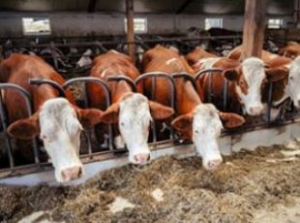Dairy in the World
CME: Proportion of Heifers in Feedlots Continue to Rise

We will quickly review those reports today. Note, at the bottom of this page is a production and price summary from various weekly reports (data are preliminary) compiled by USDA’s Agricultural Marketing Service (Market News Division).
As of 1 July, cattle on feed in US feedlots with a capacity of 1,000 head or more totaled 11.5 million head, 1.8 percent above a year earlier. Animals placed into feedlots during June were below 2018’s (down 2.3 percent).
Head marketed also was lower. But, the year-over- year drop was caused by one less slaughter day in June of this year compared to last year (daily average daily marketings increased by 1.8 percent). Some monthly cattle on feed graphics are available here.
The monthly Cattle on Feed report also included the quarterly survey of animals on-feed by class. As of 1 July, the proportion of heifers in feedlots had continued to rise. The latest percentage of heifers and heifer calves was 38.9 percent, which was the largest for any quarterly count since 1 December 2020 (39.4 percent).

Year-over-year, the heifer count was up 7.7 percent, while the number of steers declined by 1.7 percent. Given that the reported 1 January 2019, national cowherd was bigger year-over-year (rising 0.5 percent) year-over-year, the drop in steers on-feed suggests that the 2018 US calf crop was overestimated. The rather consistent year-over-year declines in steer slaughter, that began in 2018, also support that assessment.

As of mid-year, NASS estimated that nationwide the number of all cattle and calves was unchanged from a year ago. Also constant, was the number of beef cows, while the dairy cows slipped by 1 percent.
Importantly, the survey estimated that the number of heifers being held for beef cow replacement purposes dropped by 4 percent compared to 2018’s. In tandem, the number of "other heifers" (those in feedlots, etc.) was higher (up 5 percent year-over-year).
The first estimate by NASS of the 2019 calf crop showed it slightly smaller than a year ago (down less than 1 percent). Cyclically, US herd growth has stopped.
As of 1 July, the calculated feeder cattle supply (includes calves) outside of feedlots edged-up slightly (0.3 percent) compared to a year ago. Pragmatically, that 1 July statistic has been unchanged for the last three years.

You can view the Cattle on Feed report by clicking here, and to view the mid-year Cattle inventory report, please click here.
























